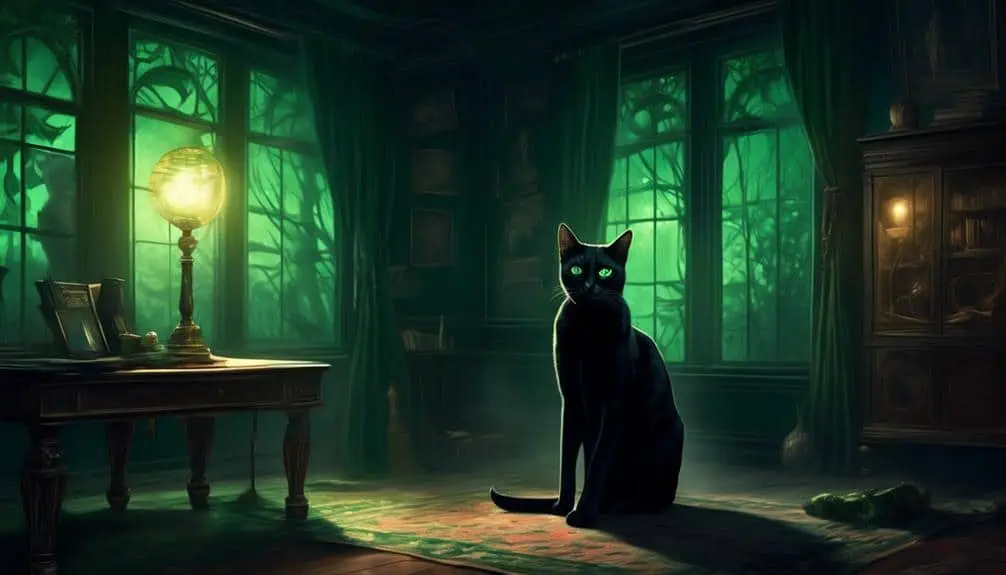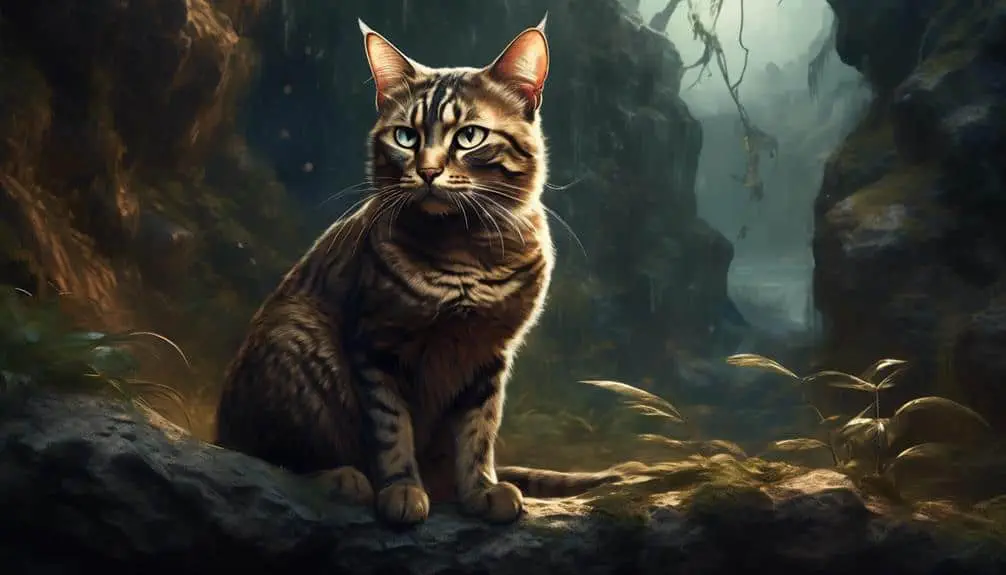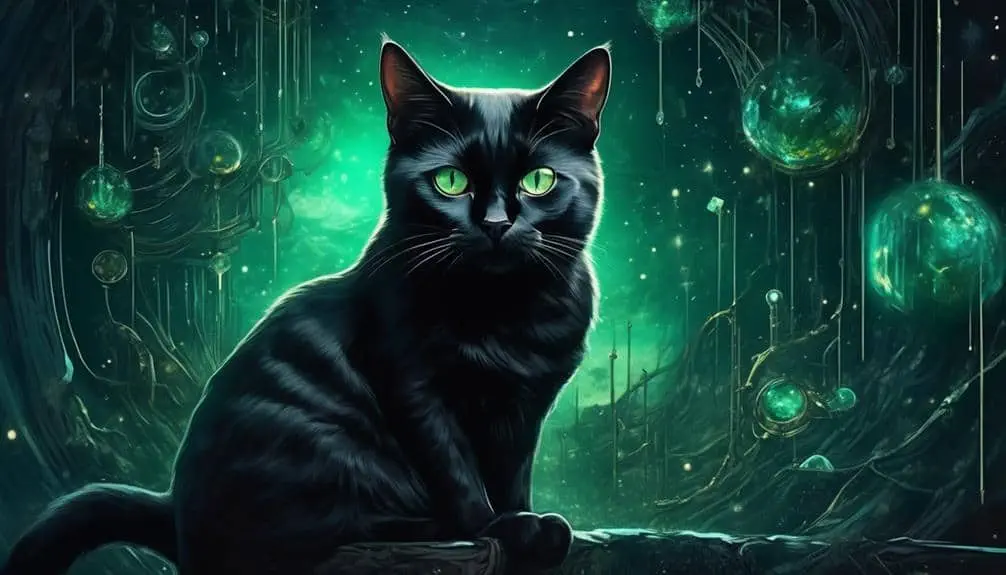The Best Fluffy Pancakes recipe you will fall in love with. Full of tips and tricks to help you make the best pancakes.

In the realm of feline behavior, there exists a phenomenon that has mystified cat owners and researchers alike: the act of a cat staring into oblivion. This enigmatic behavior has sparked a quest for answers, as experts strive to understand the motivations and underlying causes behind this peculiar action.
From the influence of catnip and the intricacies of sensory neurons to the cat's heightened vision and acute sense of hearing, various physiological factors come into play. Curiosity and observation also play a role, as cats are known for their inquisitive nature. Additionally, medical conditions such as seizures and feline dysautonomia may contribute to prolonged episodes of staring.
However, there are instances where the reasons behind this behavior remain elusive, leaving us to ponder the idiosyncrasies of our feline companions. By embarking on this exploration, we hope to shed light on the mysteries surrounding cat staring and gain a deeper understanding of our enigmatic feline friends.
Key Takeaways
- Catnip consumption can cause cats to stare at nothing, potentially due to the effects of nepetalactone on their sensory neurons.
- Cats' enhanced vision, including their ability to see in the dark and perceive ultraviolet light, may contribute to their staring behavior.
- Cats' episodic memory and ability to reminisce may lead them to stare into nothing while recalling pleasant memories.
- Cats' keen sense of hearing and curiosity may cause them to focus on something we cannot see or hear, leading to prolonged staring.
Catnip and Sensory Neurons
The consumption of catnip can elicit enigmatic feline behavior, such as prolonged staring at seemingly nothing, due to the influence of a chemical compound called nepetalactone on cats' sensory neurons.
Nepetalactone is found in the leaves and stems of the catnip plant. When cats ingest catnip, nepetalactone binds to specific receptors on their sensory neurons, triggering a series of reactions in the brain.
This compound has been shown to stimulate the release of certain neurotransmitters, resulting in altered behavior in cats. The effects of nepetalactone on cats' sensory neurons can vary, with some cats becoming more active and playful, while others may become more relaxed and sedated.
The role of catnip in altering cats' behavior is a fascinating area of study, as it provides insights into the complex interaction between chemical compounds and the feline nervous system.
Enhanced Vision
Cats possess superior visual capabilities, particularly in low-light conditions, due to the exceptional sensitivity of their retinal photoreceptors. Their enhanced vision allows them to perceive details and movements that are imperceptible to humans.
In addition to their ability to see in the dark, cats also have infrared perception, which enables them to detect heat signatures and navigate their surroundings with precision.
Their visual acuity in low light conditions is attributed to the high number of rod cells in their retinas, which are responsible for detecting light intensity. This heightened sensitivity to light allows cats to hunt effectively during nighttime and increases their chances of survival.
Understanding the unique visual capabilities of cats provides insights into their behavior and helps us appreciate their remarkable adaptability in different environments.
Episodic Memory and Reminiscing

Episodic memory, a cognitive ability shared by cats and humans, plays a crucial role in their capacity to recall specific time episodes and engage in reminiscing behaviors. Cats, like humans, have the ability to remember past events and experiences, allowing them to reminisce about pleasurable moments.
This remarkable capacity for episodic memory is influenced by emotions, which can enhance the vividness and intensity of the memories being recalled. Additionally, environmental cues play a significant role in triggering reminiscing behavior in cats. Whether it's a familiar scent, a particular sound, or a specific visual stimulus, these environmental cues can transport cats back to a specific time episode, igniting their desire to reminisce and engage in behaviors such as staring into nothing.
Understanding these mechanisms can help us better appreciate and cater to the cognitive and emotional needs of our feline companions.
Keen Sense of Hearing
With their extraordinary auditory abilities, felines possess a keen sense of hearing that far surpasses that of humans. Cats have an impressive hearing range, allowing them to pick up on high frequencies that are imperceptible to us. This heightened auditory perception plays a crucial role in feline communication, enabling them to detect subtle sounds and communicate with other cats through vocalizations and body language.
Environmental noise can greatly impact cats' behavior, as they are more sensitive to loud or sudden noises than humans. Excessive noise can cause stress, anxiety, and even physical discomfort in cats. It is important for cat owners to create a calm and quiet environment for their feline companions, minimizing the exposure to disruptive noises that can negatively affect their well-being.
Curiosity and Observation

The heightened auditory perception of cats, as discussed in the previous subtopic, plays a significant role in their overall curiosity and keen observation skills. Cats are naturally curious creatures, and their enhanced hearing allows them to detect subtle sounds and movements that escape our perception.
When cats stare at nothing, it may be because they are highly focused on something we can't see or hear. Their acute senses enable them to spend hours observing bugs or dust particles, as they pick up on interesting stimuli that we may not notice.
Environmental factors also influence their curiosity, as new sights, sounds, and smells can capture their attention and trigger intense observation. Understanding the complex behavior of cat staring requires an analysis of their curiosity and the environmental factors that shape it.
Seizures and Focal Seizures
Seizures and focal seizures are neurological events that can cause cats to exhibit prolonged periods of staring into space.
Focal seizures, also known as partial seizures, originate in the cerebral cortex and affect only one side of the brain. In addition to staring, cats experiencing focal seizures may show signs of incoordination and drooling.
It is important to distinguish focal seizures from other behaviors, as prompt diagnosis and treatment can improve the cat's quality of life. Treatment for focal seizures may involve anticonvulsant medications, such as phenobarbital or potassium bromide, which help to control the frequency and intensity of seizures.
If a cat is exhibiting prolonged periods of staring into space, it is crucial to consult a veterinarian for a thorough evaluation and appropriate management.
Is a Cat’s Unblinking Stare a Sign of Mystery or Enigmatic Behavior?
Many believe that a cat stares unblinkingly: love or threat. This behavior can be mysterious and enigmatic, leaving us wondering about their intentions. Some see it as a sign of affection and love, while others interpret it as a potential threat. Understanding a cat’s body language can help decipher their true feelings.
Conclusion
In conclusion, the act of a cat staring at nothing remains an enigmatic feline behavior that continues to baffle cat owners and researchers. Despite numerous theories and factors that may contribute to this behavior, there are cases where the reasons for prolonged staring remain elusive.
Cats, with their unique physiological aspects and idiosyncrasies, possess a mysterious nature that adds to their charm and intrigue. By unraveling the mysteries behind this behavior, we deepen our understanding of our feline companions and enhance their overall well-being.








